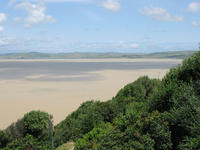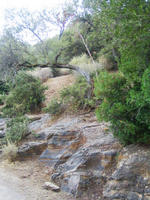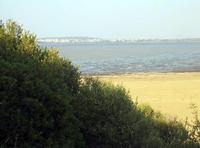You are in: Africa -> Tunisia -> Ichkeul National Park, and traditional search or Image Gallery will yield results of this site only
Ichkeul National Park
| Site number: | 8 |
|
| Type of site: | Natural | |
| Date: | - | |
| Date of Inscription: | 1980 | |
| Location: | Africa, Tunisia, Bizerta District, 25 km southwest of Bizerta | |
Up to 75 images are shown here. Click on each for more details or on Image Gallery for more images.
| Description: | Hundreds of thousands of migrating birds, such as ducks, geese, storks and pink flamingoes use the Ichkeul Lake and wetland as a key stopping point in their migrating journeys, they come here to feed and nest. Ichkeul is the only remaining lake from a string that previously stretched across North Africa. --WHMNet paraphrase from the description at WHC Site, where additional information is available. | |
| Ichkeul Lake (Arabic: بحيرة اشكل) is a lake in northern Tunisia near the shore of the Mediterranean Sea. The lake and wetlands of Ichkeul National Park are an important stopping-over point for hundreds of thousands of migrating birds each year. Among the lake's visitors are ducks, geese, storks, and pink flamingoes. The park has been on the UNESCO list of World Heritage Sites since 1980, and between 1996 and 2006 the park has also been on the group's list of World Heritage Sites in danger. Dam construction on the lake's feeder rivers has produced major changes to the ecological balance of the lake and wetlands. Because dams have sharply reduced the freshwater inflow to the lakes and marshes, the reedbeds, sedges, and other fresh-water plant species have been replaced with salt-loving plants. These changes have produced a sharp reduction in the migratory bird populations, which depend on the mix of plants that used to exist. According to the UNESCO Website, the Tunisian government has undertaken some steps to retain freshwater and reduce salinity, but some reports from the World Conservation Union suggest that the salinity has already become excessively high and the possibility for rehabilitation may be rapidly disappearing. --Wikipedia. Text is available under the Creative Commons Attribution-ShareAlike License. | ||
| Source: | http://whc.unesco.org/en/list/8 | |
| Reference: | 1. UNESCO World Heritage Center, Site Page. | |



















